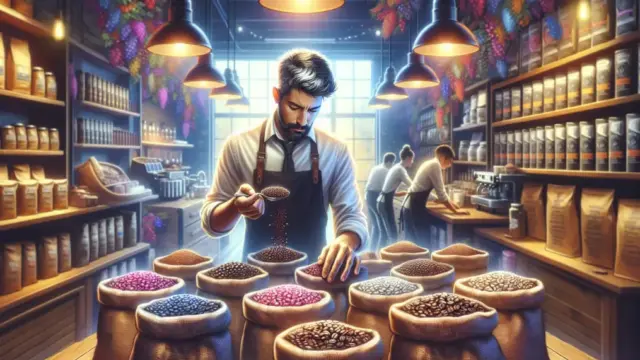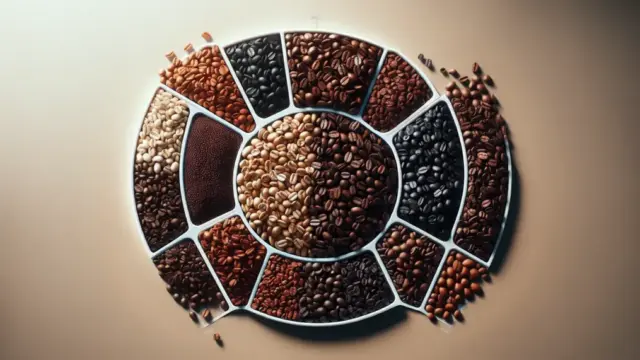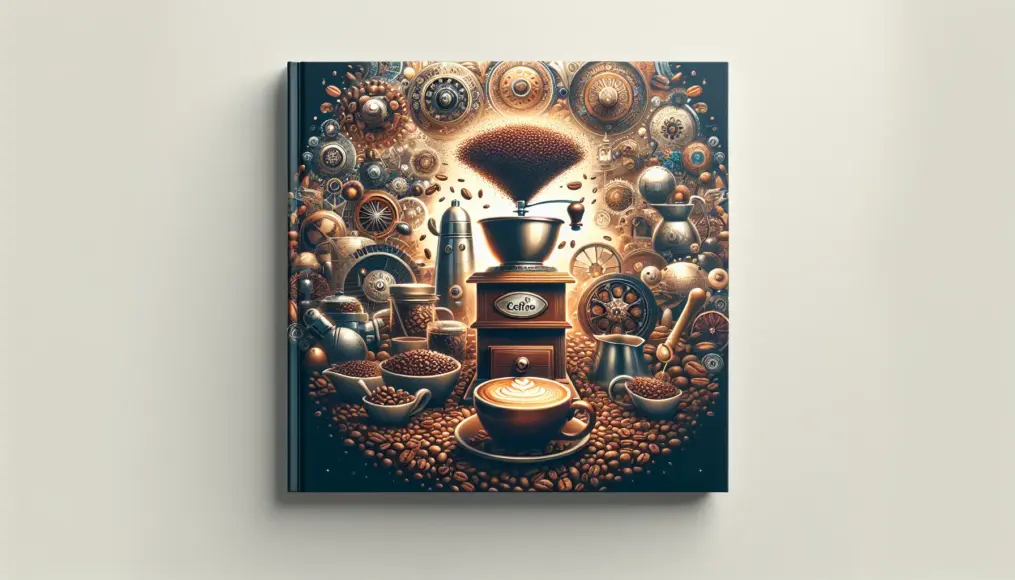Understanding the charm of roasted coffee can transform your coffee breaks at home into something truly special. By grasping the roasting process and learning how to choose the right beans and roasting methods, you can savor a richly flavored cup of coffee. In this blog, we’ll cover everything from the basics of coffee roasting to easy techniques you can try at home.
Finding your perfect roast can make your daily coffee ritual even more enjoyable. As we delve into the history and culture of roasting, we invite you to explore the fascinating world of coffee with us.
- We’ll explain what roasting is and share essential knowledge.
- Discover the different types of roasting and their impact on flavor.
- Learn simple roasting methods and tips you can easily apply at home.
The Basics of Coffee Roasting
One of the key factors that greatly influences the flavor of coffee is roasting. Roasting is the essential process of transforming raw coffee beans through heat, bringing out their aromas and flavors. In this article, we’ll explore what roasting is, along with its history and cultural significance. Understanding roasting will help you discover your perfect roast and take a step deeper into the rich world of coffee.
What is Roasting?
Roasting refers to the process of heating raw coffee beans, which triggers chemical changes in the components contained within the beans. This process causes the beans to expand, change color, and develop rich aromas and flavors. Depending on the temperature and duration of the roasting, a variety of flavors can be created, leading to many styles ranging from light to dark roasts. To find your ideal roast, it’s important to understand the basics of roasting.
Different roasting levels result in distinct flavors and aromas, allowing you to choose according to your personal preference. For instance, light roasts are fruity with noticeable acidity, medium roasts offer a balanced flavor, and dark roasts are rich and strong in bitterness. If you’re roasting at home, having a grasp of these characteristics can make your coffee experience even more enjoyable.
- Roasting is a crucial process that enhances the flavor of coffee beans.
- Different roasting levels provide a variety of taste experiences.
- Essential knowledge for home roasting.
The History and Culture of Roasting
The practice of roasting coffee has a long history that dates back to ancient times. The earliest roasting is believed to have taken place in Ethiopia, the birthplace of coffee. From there, it spread to the Arabian Peninsula and eventually around the globe. As roasting techniques evolved, unique styles emerged that reflected the diverse cultures and preferences of different regions.
In particular, coffee gained popularity in Europe during the 17th century, leading to a greater emphasis on the roasting process. Over time, roasting techniques have developed and distinct methods have been established in various countries. By learning about the different ways coffee is enjoyed across cultures and regions, you can deepen your appreciation for this beloved beverage.
- The history of coffee roasting stretches back to ancient times.
- Various roasting styles exist across different regions.
- Understanding roasting culture expands your coffee enjoyment.
Types of Roasting and Their Characteristics
Coffee roasting comes in various styles, each significantly altering the flavor profile depending on the roast level. By understanding the differences between light, medium, and dark roasts, you can make informed choices about which coffee to select and discover the roast that suits your palate best. In this section, we will explore the types of roasting, their characteristics, and how roasting levels impact the flavor of coffee.
The Differences Between Light, Medium, and Dark Roasts
Light roasts are characterized by a quick heating process that results in a lighter color and fruity flavor. With a pronounced acidity, this roasting style highlights the coffee’s inherent flavors, making it an excellent choice for those who appreciate a fresh and vibrant taste. On the other hand, medium roasts strike a balance, allowing both acidity and body to shine through. This roast level is widely popular and can often be found in cafes.
Dark roasts involve a longer heating process, which creates a rich flavor and a pronounced roastiness. If you prefer a strong, bold coffee with a robust body, this style is perfect for you. Additionally, dark roasts may have slightly lower caffeine content, making them a good option for those looking to unwind. By understanding these roasting differences, you can find the cup that’s just right for you.
- Light roasts are fruity and have a strong acidity.
- Medium roasts are well-balanced and popular among many.
- Dark roasts offer a rich and toasty flavor experience.
How Roasting Levels Impact Flavor
The influence of roasting levels on coffee flavor is profound. As roasting progresses, chemical changes occur within the beans, altering their aroma and taste. Light roasts allow you to fully appreciate the original flavors of the beans, often featuring a sweetness reminiscent of fruit. In contrast, dark roasts emphasize the roast’s inherent smokiness and bitterness, delivering a deep, rich flavor.
Understanding how different roast levels affect flavor can make your coffee selection process more enjoyable. Furthermore, using freshly roasted beans can enhance your tasting experience, so why not try roasting at home to discover your unique coffee profile?

If you’re interested in the techniques and bean selection for enjoying coffee at home, check out this article: “Home Coffee Roasting: A Comprehensive Guide from Bean Selection to Roasting Techniques.” It delves deep into the basics and charms of home roasting, offering insights that cater to both beginners and seasoned enthusiasts.
- The flavor and aroma change significantly depending on the roast level.
- Light roasts allow you to enjoy the original flavors.
- Dark roasts highlight a rich body and robust roastiness.
Choosing the Right Coffee Beans
If you want to truly enjoy coffee, the first step is selecting the right beans. Understanding the types and characteristics of coffee beans can help you discover your preferred roast. Moreover, the unique flavors of beans from different regions add to the appeal. In this section, we’ll delve into the types of beans, their characteristics, and some regional recommendations. By finding the right beans for you, your coffee enjoyment will expand significantly.
Types of Beans and Their Characteristics
There are primarily two types of coffee beans: Arabica and Robusta. Arabica beans are known for their rich sweetness and acidity, along with a delightful aroma, making them a favorite for coffee lovers. Generally considered a premium option, its qualities shine through especially in light to medium roasts. On the other hand, Robusta beans have a stronger bitterness and a fuller body, containing more caffeine. When roasted dark, they offer a robust flavor experience.
Additionally, the flavor profile can vary significantly based on the beans’ origin. For example, Ethiopian beans are celebrated for their fruity and floral notes, while Colombian beans are known for their balanced taste. Utilizing this information, you can select beans that align with your personal preferences.
- Arabica beans are rich in sweetness and aroma
- Robusta beans have strong bitterness and a full body
- Enjoy diverse flavors based on origin
Regional Recommendations for Coffee Beans
The flavor of coffee beans can vary greatly by region. Brazilian beans, for instance, are characterized by their nutty aroma and chocolate-like sweetness. In contrast, Guatemalan beans offer a rich acidity and fruity scent. Indonesian beans bring an earthy aroma and spiciness, providing a unique flavor experience.
By choosing beans from these various regions, you can enjoy a coffee experience that differs from your usual cup. Your coffee time at home is sure to become more enjoyable. We encourage you to sample beans from different regions and discover your own perfect brew.
- Brazilian beans feature a nutty aroma
- Guatemalan beans offer fruity flavors
- Indonesian beans are known for their spiciness
Home Coffee Roasting Methods
Roasting coffee at home is surprisingly easy and a lot of fun. The aroma and flavor of freshly roasted beans are worlds apart from what you find in store-bought coffee, allowing you to savor a special cup right in your own kitchen. In this section, we’ll introduce some beginner-friendly roasting kits and share tips and tricks to ensure your roasting experience is a success. Let’s take the first step toward enjoying your very own unique roast!
Beginner-Friendly Roasting Kits
If you’re looking to start roasting at home, using a beginner-friendly roasting kit is highly recommended. These kits come equipped with all the essential tools and are designed for ease of use, making them perfect for first-timers. Typically, you’ll find a roasting machine, a thermometer, and a container for the beans included in the set. With these items, you can easily dive into the world of coffee roasting.
There are different types of roasting machines available: some use a stovetop flame, while others are electric. Electric roasters are particularly good for precise temperature control, allowing for consistent roasting results. By choosing a roasting kit that fits your lifestyle, you’ll be able to get started with ease.
- Beginner-friendly roasting kits come with all the necessary tools.
- Electric roasters make temperature management a breeze.
- Selecting a kit that suits your lifestyle is key.
Tips and Precautions for Successful Roasting
To achieve great results in your roasting endeavors, there are a few tips and precautions to keep in mind. First, it’s best to start with a smaller amount of beans to avoid burning them. Beginning with a small batch makes it easier to get a feel for the roasting process. Also, don’t take your eyes off the beans while they roast; observing the color changes is crucial.
After roasting, make sure to cool the beans thoroughly. If you don’t cool them down, residual heat can continue the roasting process, potentially leading to an unexpected bitterness. Ideally, store your roasted beans properly and enjoy them as soon as possible for the best flavor.
- Start with a small amount of beans for roasting.
- Observing the color and aroma of the beans during roasting is essential.
- Be sure to cool the beans properly and enjoy them quickly.
Conclusion
We hope this article has enriched your understanding of coffee roasting and enhanced your coffee time at home. By exploring different roast types, selecting the right beans, and mastering at-home roasting techniques, you can elevate your coffee experience to new heights. Discover your preferred roast and enjoy a fresh, exciting coffee journey.
Let’s continue to delve into the world of roasting and coffee, making each coffee break a special occasion. Why not create your own unique blend and savor those delightful moments?
- Understand how different roast types affect flavor
- Learn how bean selection greatly impacts the taste of your coffee
- Master at-home roasting methods to enjoy your favorite coffee
Are you ready to take on the challenge of coffee roasting today? We’d love to hear your thoughts and favorite beans in the comments! Looking forward to your feedback!

































































Comment